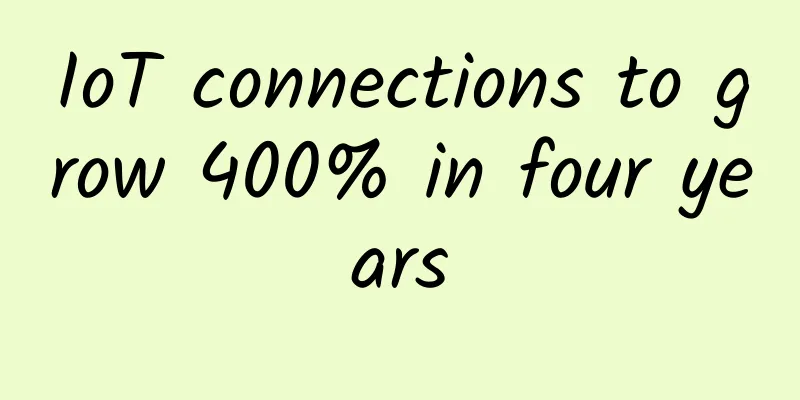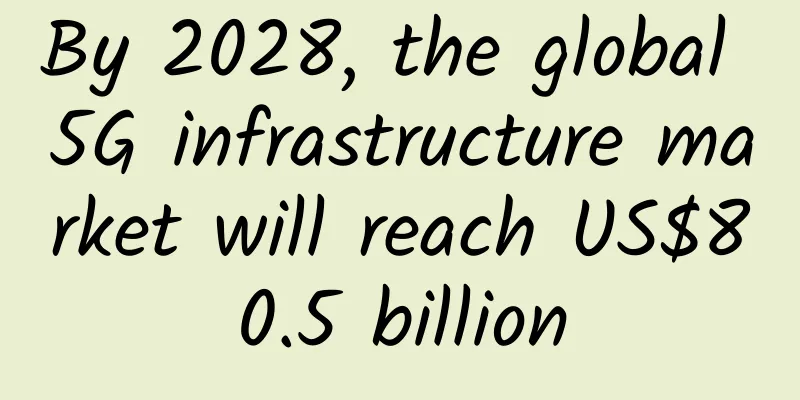How is IPv6 represented? How is IPv4 converted to IPv6?

|
IPv6 has been gradually applied, and now many operators support IPv6. The day before yesterday, we also released how to let the computer use IPv6 address? Many friends are asking? What is the role of IPv6 and how is it represented? Today we will take a detailed look at IPv6 related calculations and conversions.
1. What is IPv6? The IPv4 address we are using now is 32 bits, for example, 59.123.123.123. There are about 4.3 billion of them in total, which is not enough for every person on earth, let alone every computer. If we subtract the 192 and 170 address segments used for intranets, the number will be even less. Until now, it has been even less. With the advancement of technology and the development of the Internet of Things, IPv4 obviously can no longer meet the requirements, which has seriously restricted the application and development of the Internet, so IPv6 came into being. So what is IPv6? IPv6 is the abbreviation of Internet Protocol Version 6, where Internet Protocol is translated as "Internet Protocol". IPv6 is the next-generation IP protocol used to replace the current version of IP protocol (IPv4), and it is said that it can encode a URL for every grain of sand in the world. IPv6 uses 128-bit addresses, compared to the 32-bit addresses used by IPv4: According to the address number calculation method, we can calculate the number of addresses that IPv6 can provide: 2^128-1 (about 340 trillion) IPV6 addresses are extremely abundant and almost inexhaustible. It is said that every grain of sand on the earth can be assigned its own address, not to mention every mobile phone and computer. Even refrigerators and washing machines can have their own unique IP addresses, which makes it much more advanced. 2. Benefits of IPv6 What is the use of IPv6? This is also what many friends are asking. In fact, IPv6 has many benefits. 1. Have an unlimited number of IP addresses The 128-bit IPv6 has a large number of IP addresses, providing enough IP addresses for the next few decades. The huge address space provides globally unique addresses for billions of new devices, that is, ordinary people can also have public IP. In the IPv4 era, due to limited addresses, only enterprises can apply for public networks, and the networks we use are all private addresses. With IPv6, every device can have a public IP. So what can we do with a public network? It has many uses. For example, our project monitoring can be accessed directly using the public IP address, which can effectively solve the problem of remote control access in monitoring, and remote monitoring and centralized control will not be so troublesome. Enterprises or individuals can also build a server and access the server using a unique IPv6 address, making file sharing extremely simple. 2. Multi-level hierarchy helps route aggregation, improving routing efficiency and scalability It can be faster. To put it in professional terms, it is a tiny speed increase that humans cannot feel, but it is still faster after all. 3. Ability to handle mobility and security mechanisms more effectively It is safer. In the past, people would often be inexplicably infected with Trojans or viruses, but this will be significantly reduced with IPv6. 4. It will usher in the best era for smart homes and the Internet of Things. It is hard to imagine what it will be like when mobile phones, computers, cars, televisions, air conditioners, robots, etc. are all assigned a unique IP address. The development of the Internet of Things will only be limited by our imagination. 3. IPv6 representation The IPv6 address is represented in hexadecimal. 128 bits are divided into 8 groups, each with 16 bits, represented by 4 hexadecimal numbers, and each group is separated by ":". The leading 0 in each group can be omitted, but each group must have a number. 1. Hexadecimal representation of the number of points The format is X:X:X:X:X:X:X:X:X, where each X represents 16 bits, displayed in hexadecimal, as shown below: IP one:ABCD:EF01:2345:6789:ABCD:EF01:2345:6789 IP two: FEDC:BA98:7654:3210:FEDC:BA98:7654:3210 IP three: 1080:0:0:0:8:800:200C:417A 2. 0-bit compression representation In some cases, an IPv6 address may contain a long segment of 0s. You can compress the continuous segment of 0s into "::". However, to ensure the uniqueness of address resolution, "::" can only appear once in the address. For example: 1080:0:0:0:8:800:200C:417A =1080::8:800:200C:417A FF01:0:0:0:0:0:0:101=FF01::101 FF01:0:0:0:0:0:0:1101 = FF01::1101 0:0:0:0:0:0:0:1 = ::1 0:0:0:0:0:0:0:0 = :: 3. Embedded IPv4 address representation In order to achieve IPv4-IPv6 interoperability, the IPv4 address will be embedded in the IPv6 address. In this case, the address is often expressed as: X:X:X:X:X:X:dddd. That is, the first 6 groups are expressed in dotted hexadecimal, the next two groups are expressed in decimal, and the last 32-bit address is expressed in dotted decimal notation of IPv4, for example, ::192.168.0.1 is a typical example. 4. How to convert IPv4 to IPv6 address? As we mentioned above, in order for IPv4 addresses to communicate with IPv6 addresses, IPv4 addresses need to be converted to IPv6 addresses. Example: If an IPv4 address is 135.75.43.52, which is a 32-bit address, how do you convert it to IPv6? 1. Non-standard conversion: You only need to add 0 to the first 6 groups of 96 bits of the IP address, that is, 0000:0000:0000:0000:0000:0000:135.75.43.52 That is::135.75.43.52 (embedded IPv4 notation) 2. Standard conversion 135.75.43.52 is calculated as 87.4B.2B.34 in hexadecimal. The 87.4B.2B.34 string address is still 8 bits per group, so two groups of v4 addresses are needed to synthesize a v6 address. Then fill the first 96 bits with zeros, it can be converted to 0000:0000:0000:0000:0000:0000:874B:2B34 or ::874B:2B34. Supplement: How to convert decimal to hexadecimal? Here, it is necessary for me to add some information on how to convert decimal into hexadecimal. In the IPv6 era, this may be needed frequently. The method is: divide the decimal number by 16, take the remainder in reverse, and continue dividing until it cannot be divided anymore. Of course, everyone may be confused when hearing this method, so let's take a closer look at the calculation process with an example. For example, the decimal IPv4 address: 135.75.43.52 is converted to hexadecimal. In order to help everyone understand the principle, the specific calculation process can be seen in the figure below: The hexadecimal numbers 10, 11, 12, 13, 14, and 15 are represented by A, B, C, D, E, and F respectively. So the decimal 135.75.43.52 is finally converted to hexadecimal 87.4B.2B.34, which is converted to ipv6 as ::874B:2B34. Of course, it can also be converted directly through tools. |
<<: Three pictures tell you the principles of Linux TCP/IP protocol stack
>>: Which 5G core patents cannot be circumvented by others? Huawei responds
Recommend
Smart City - Application Areas of 5G
Smart city is one of the three major application ...
What traditional financial services can learn from emerging banks and fintech companies
The pandemic has exposed gaps in nearly every ind...
RAKsmart: Japan/Hong Kong/US popular cloud servers as low as 10% off $12.15/year, regular cloud servers 30% off
RAKsmart also offers promotions for cloud servers...
Artificial intelligence combined with 5G will change the diagnosis and treatment model and process of the medical industry
The global COVID-19 pandemic has accelerated the ...
Huawei's Intelligent IP Network Solution Creates a Simplified 5G Bearer Network
At the HAS Analyst Conference recently, Chen Jinz...
How to find the IP address of the router to improve work efficiency
How to find the IP address of a router is an esse...
[Black Friday] DediPath: 35% off VPS/Hybrid Servers starting at $1.2/month, 1Gbps unlimited traffic, multiple data centers in Los Angeles and other places
DediPath's Black Friday discounts this year a...
DediPath Spring Promotion: 35% off on all VPS, dedicated servers starting at $49/month, Los Angeles/Dallas/Seattle/New York data centers
DediPath has just launched a spring promotion, of...
Goodbye, 2G/3G is retiring
With the advent of the 5G era, there have been a ...
Comprehensive Anatomy of Data Center Facility Planning and IT Operations Checklist
Making the right choices in terms of data center ...
Huawei and Thailand's True Group sign 5G MoU, making the first 5G international video call between China and Thailand a reality
Recently, Huawei and Thai operator TrueMove H (he...
Cisco's Scott Harrell: A new era of networking has arrived. Cisco empowers enterprises to innovate and transform
[51CTO.com original article] On the eve of the 20...
Understand TCP Packet Unpacking in One Minute
Usually, you may encounter such a phenomenon duri...
80VPS: Japan/Hong Kong VPS annual payment starts from 299 yuan, Los Angeles VPS annual payment starts from 199 yuan
80VPS, a well-established Chinese hosting company...
PQHosting: 1Gbps unlimited traffic large hard disk VPS in the Netherlands starting at 3.77 euros per month
"PQ HOSTING PLUS" SRL is a foreign host...









